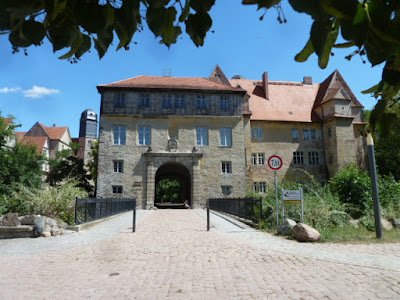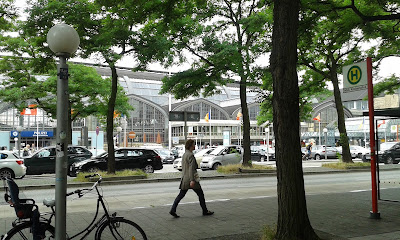The audience gathering outside the Magnikirche.
Every Wednesday afternoon at 5.15pm in July and August, the church invites choirs throughout the Braunschweig area to come and sing German folk songs to the local people, who like to sing along to the songs of their childhood.
It was Waggum Ladies Choir last Wednesday, and this is the choir that is hoping to come to Bath next May 2016 as part of the Bath/Braunschweig Twinning Association´s exchange visits scheme. A Bath school choir visited the city three years ago and sang in the cathedral, and we are hoping to arrange for the choir to sing in Bath Abbey.
Our choir warming up in the church before we ventured out in the heat to sing some lovely folk songs. Half the church was destroyed in October 1944 when the city was heavily bombed by the RAF, but it has been beautifully restored with some intensely blue stained glass windows.
The choir´s view of the audience, with Herr Schäfer, our conductor standing centre.
Another view of the audience, with Herr Schäfer to the far right.
Herr Schäfer is an excellent conductor and pianist, and he manages to get the very best out of all his lady singers. The choir members are lovely to sing with, and they make me feel so welcome each year.
The Magni Quarter with the church surrounded by half timbered houses, is one of Braunschweig´s "Historical Islands." Before the war the city had the highest number of half timbered buildings in the whole of Lower Saxony, but the WWll bombing and subsequent fire storm destroyed 90% of these buildings. Many sections of the buildings, the timbers, doors etc, were rescued for safe keeping after the bombing and stored away, and later used to reconstruct historical areas within the city, and very authentic they look too.


















































